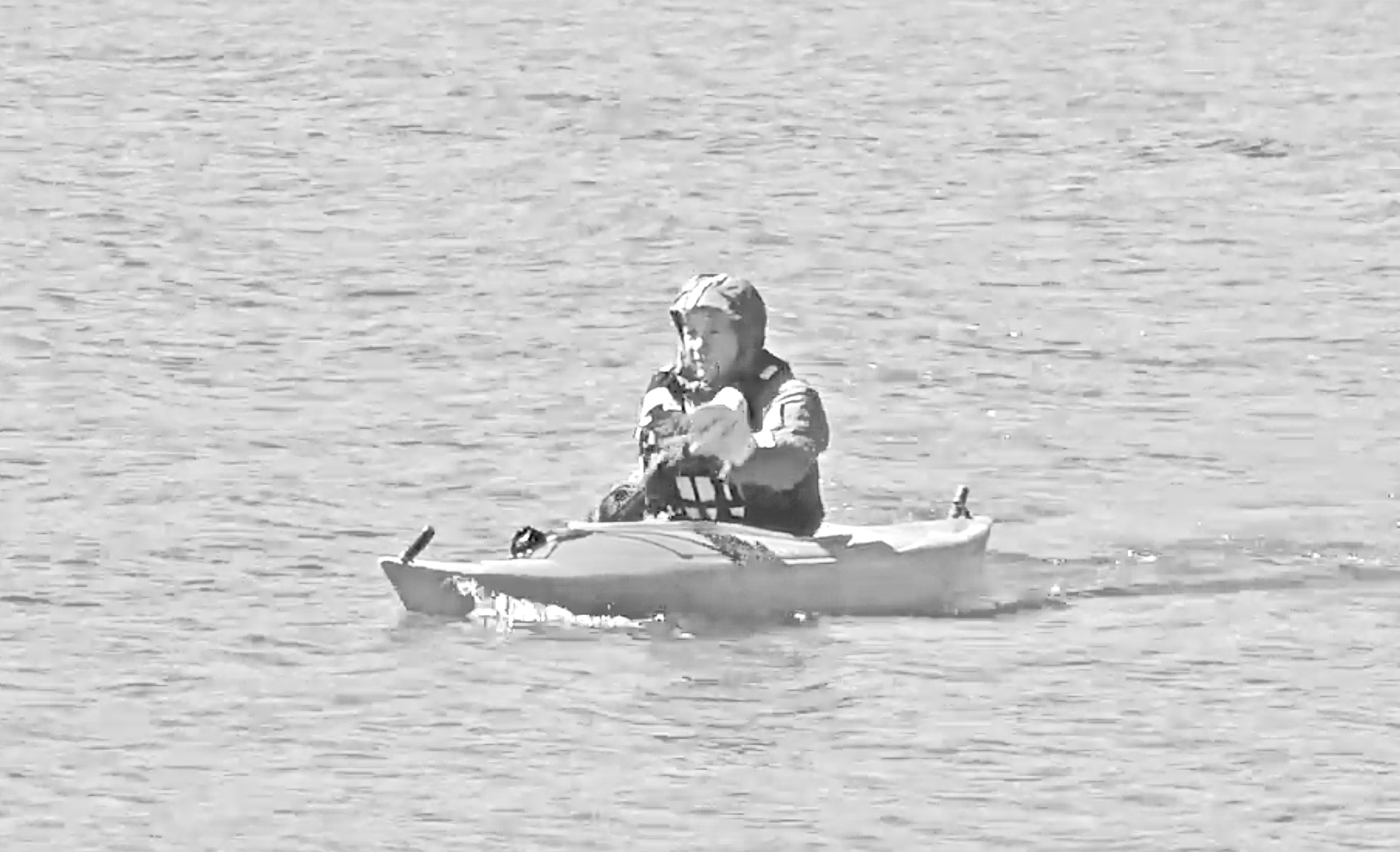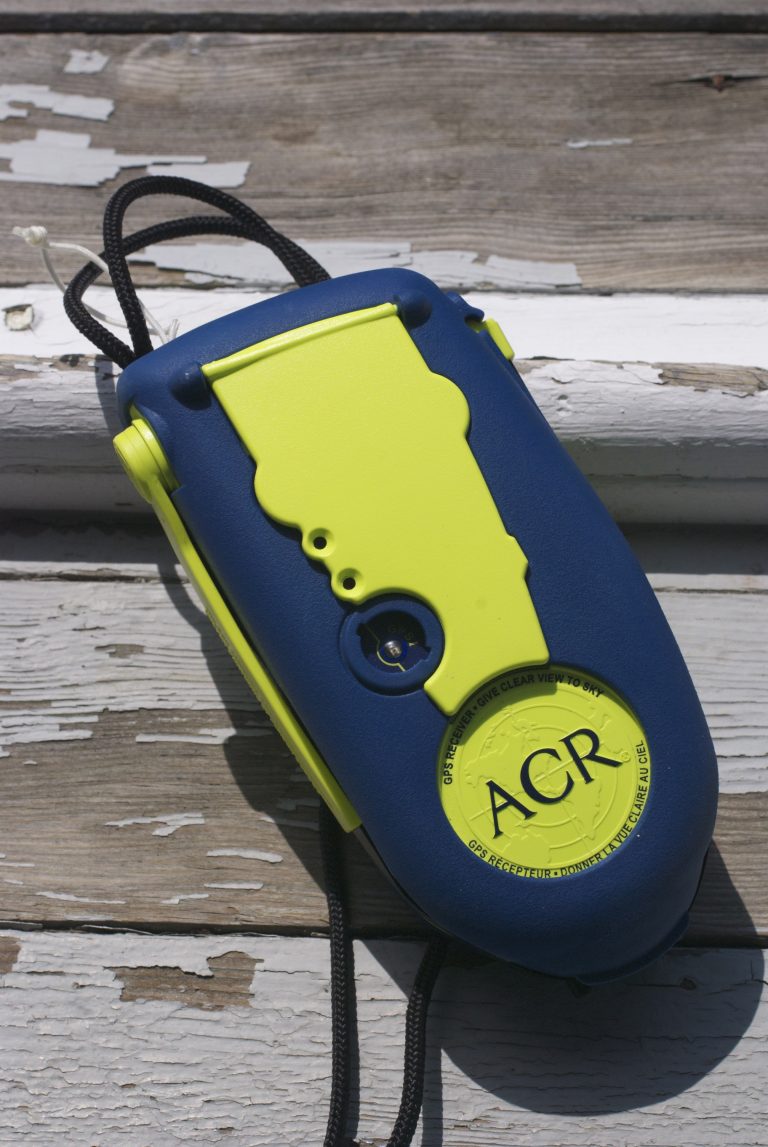


We paddlers love those short bursts of warm weather in an otherwise frigid season. After weeks, or even months, of being cooped up, it’s great to get back on the water—even if only for a brief spell.
However, paddling in the fall, spring, or winter in New England (and in coastal Maine all the time) carries with it certain dangers, namely the risk of hypothermia, either from capsizing or being caught in deteriorating conditions.
With that in mind, here are some tips on playing it safe in cold water, even on a short paddle.
Aside from a lifejacket, the most critical piece of gear to carry with you is a Personal Locator Beacon, or PLB. When activated, a PLB will alert search-and-rescue personnel and lead them to your location, no matter where you happen to be. Retail prices for PLB’s start at around $200 and carry a battery life of five years.

When dressing for a cold-water paddle, start with breathable, lightweight polypropylene undergarments and layer up to a waterproof, windproof shell and pants. If you’re really serious about safety, you might want to invest in a dry suit, which seals out water in the event of a roll. A dry suit is critical in cold water, where the body can only withstand a few minutes of immersion before simple motor functions become impossible. It won’t guarantee survival, but it may buy you enough time to reach shore or climb back on the kayak. Lastly, waterproof gloves are important for keeping your hands functional. After all, a paddle wont’t do you much good if you can’t hold it.
It goes without writing (although we’ll do it anyway) that the most important cold-water paddling item is a Coast Guard-approved, properly fitting PFD, which will keep you afloat even if your limbs become useless. Connecticut requires PFDs to be worn by paddlecraft users from October 1 to May 31, and Massachusetts has the same requirement from September 15 to May 15. In Rhode Island, all paddlecraft users are required to wear a PFD year-round, regardless of age. (See below for full list of paddle craft requirements by state as of 2023.)
Carry a sound-signaling device, such as a whistle or airhorn, to summon help in an emergency.
Did you even stop to consider what would happen if you accidentally lost your paddle? If the wind happened to be blowing offshore, you could be in some serious trouble, especially if you were paddling alone. A small, collapsible anchor stowed aboard your kayak or canoe could save the day.
Another thought is to carry a telescoping paddle onboard, as a backup to your main paddle. These can be purchased online or at many marine and paddling supply stores.
Staying close to shore is a great way to stay safe. It might take longer to get where you want to go, but at least you’ll be close to dry land if you become exhausted, disoriented, or capsize.
Paddle with a partner (or more). A friend can help you get out of the water, make it to shore, stay warm, or alert rescuers in an emergency if you become incapacitated.
Remember to let others know where you intend to paddle and your estimated time of return. A simple float plan such as a quick sketch or description of your route left on the seat of your vehicle will often do the job.
We all know that the weather can change quickly in the spring and fall, so make sure you check the forecast before setting out. Then check it again before launching. On the water, watch the skies for any sign of an approaching front and monitor the latest weather updates on your phone, if possible. If the wind starts to pick up, consider cutting your trip short and turning around.
cell phone in a waterproof bag
waterproof handheld VHF radio
anchor
handheld GPS or compass
whistle
airhorn
signal mirror
flares
protein bars
water
mylar “space” blanket
Connecticut
A properly fitting, Coast Guard-approved PFD must be worn by all paddlers from October 1 to May 31. There must be a wearable PFD aboard for each person onboard a paddle craft. All persons 12 and under must wear a Coast Guard-approved PFD regardless of season.
Rhode Island
A Coast Guard-approved PFD must be worn by all operators and passengers of canoes, kayaks, sailboards, kiteboards, paddleboards, or any other paddlecraft, regardless of age or season.
Massachusetts
A Coast Guard-approved PFD must be worn by canoeists and kayakers from September 15 to May 15 (includes waterfowl hunters). Paddlers under 12 years old are required to wear a properly fitting PFD year-round.
New Hampshire
All vessels, including kayaks and canoes, carry a Type I, II, or III PFD for each person on board. Any person age 12 and under must wear a PFD while onboard any vessel in New Hampshire.
Vermont
All canoes, kayaks, and paddleboards must carry a properly fitting, Coast Guard-approved PFD for each person on board. All persons 12 years and under must wear a PFD.
Maine
All watercraft, including canoes, kayaks, and stand-up paddleboards, must carry at least one Coast Guard–approved, properly fitting PFD for each person on board. All persons 10 and under must wear a Type I, II, or III PFD at all times and on any watercraft. Paddlers are also required to carry a whistle or horn that’s audible for two seconds.

Text box item sample content
Text box item sample content